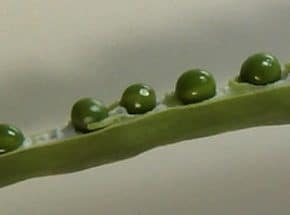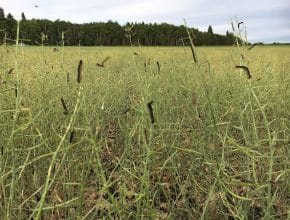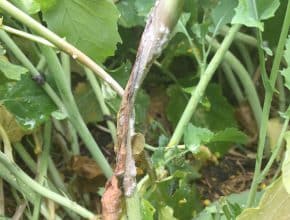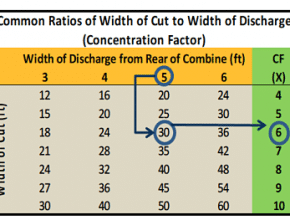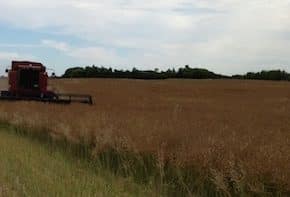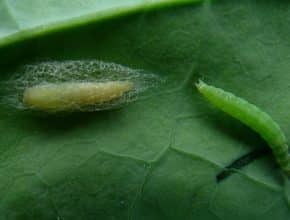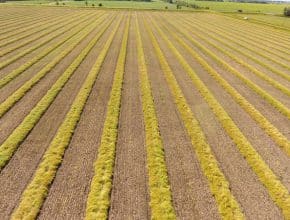Home / Canola Watch / August 10, 2017 - Issue 20
-
What do you know about seed colour change and canola swath timing? Take our quiz to test your skills…
-
A heavily-infested field in western Manitoba (south of Riding Mountain National Park) generated a lot of interest on Twitter in the past week. It prompted a lot of scouting, which is good. But what this one field and the ensuing scouting demonstrated is that bertha armyworm population spikes can be highly localized…
-
Diseases are usually easiest to see and diagnose at this stage of the season. The photo shows blackleg in a clipped canola stem. Patches of dying or prematurely-ripening plants are obvious areas to scout (and show up really well with drone images), but even clean-looking fields can provide some early warning if you take time to look…
-
This is what a 5 bu./ac. loss looks like. There's nothing to see. That's why you need to follow these steps to find out how much you're really throwing over…
-
Straight-combining canola can be made easier with a pre-harvest herbicide. Here are the options: glyphosate, Heat LQ/glyphosate and Reglone (diquat)…
-
Here are factors that create the ideal situation for straight combining canola…
-
Diamondback moth larvae have been found in canola fields across the Prairies this year. Of those fields with the larvae, counts in many (perhaps most) are below and often well below thresholds. Some fields are at thresholds. Some fields seem to be well above thresholds. The key is to the check each field. Diamondback larvae can vary in number from…
-
Optimal swath timing for canola yield and quality is when at least 60% of seeds on the main stem are showing some colour change. Seed colour change (SCC) is considered any amount of yellow or brown on the seed. (See scouting tips below.) This increases crop yield because side branches have longer to fill and average seed size for the…

